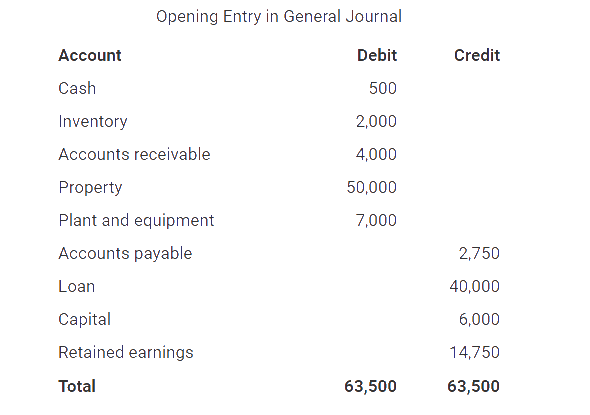What is opening entry
Opening entry is referred to as the first entry that is recorded or which is brought forward from a previous accounting period to the new accounting period.
In an ongoing business, the closing balance of the previous accounting period serves as an opening balance for the current accounting period.
The opening entry will vary based on the business and the opening entry can be either on the debit or credit side.
Passing Opening entry
In a business concern, at the start of an accounting period, the accountant passes a journal entry that contains the opening balance of all assets and liabilities, including the capital.
Assets have a debit balance and therefore, assets are debited in the opening entry, while liabilities have a credit balance and are therefore credited in the opening entry.
One sample journal entry can be represented as :
Assets A/c Dr.
Liabilities A/c
Capital A/c
If the assets exceed all the liabilities, the excess value will be regarded as a value of capital and will be shown as a credit in the opening entry, while if the liabilities exceed the value of the assets, it will be debited in the opening entry.
Example of Opening Entry
The opening entry of a business can be depicted as follows:

This concludes the topic of Opening Entry, which is an important concept of Accountancy for Commerce students. For more such interesting topics, stay tuned to BYJU’S.
|
Important Topics in Accountancy: |
Comments